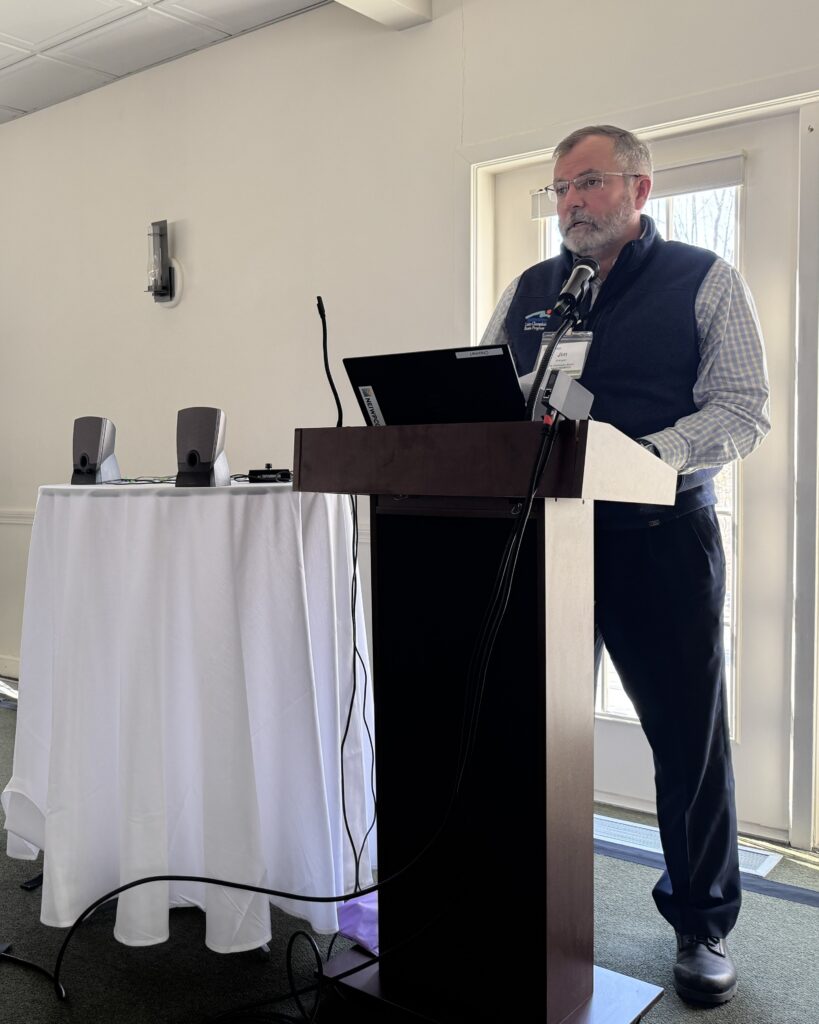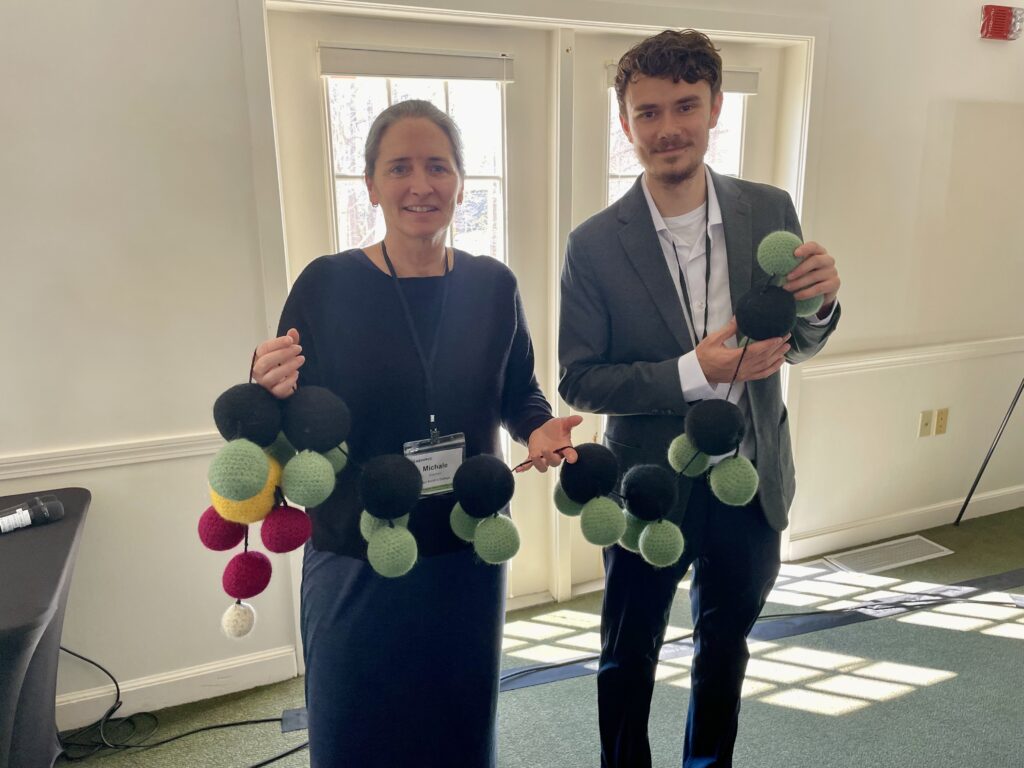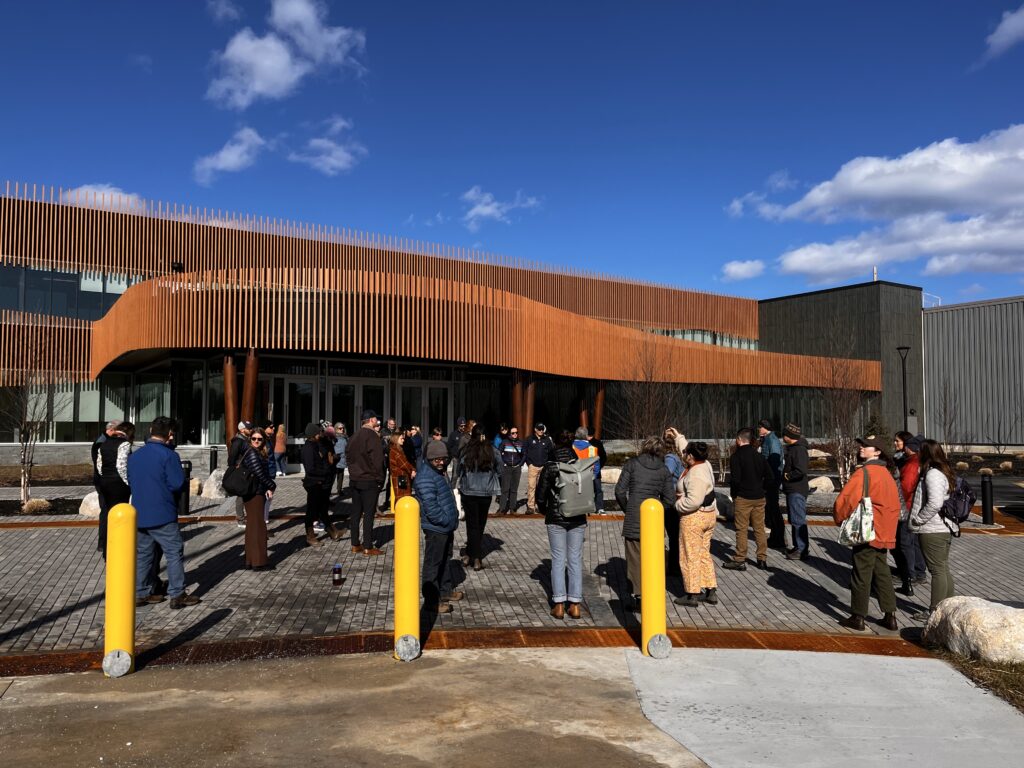The 35th Annual Nonpoint Source (NPS) Conference brought together more than 120 watershed professionals to explore a range of topics, including nature-based erosion control, community engagement, and innovative approaches to NPS pollution management. Participants included environmental experts, agency staff, nonprofit leaders and students from across the Northeast. The event was held in Freeport, Maine, from April 9-10, with the theme, “Nonpoint Source Pollution and Clean Water: Perspectives from the Arts, Sciences and Humanities.”
The conference began with welcoming remarks from NEIWPCC Commissioner and Environmental Attorney David Van Slyke. He emphasized the importance of collaboration and moving forward with shared water quality goals.

Van Slyke was followed by the plenary presentation titled, “Our Shore: Nature-Based Erosion Control Training and Guidance Program” by Nathan Robbins, climate change specialist with the Maine Department of Environmental Protection. His presentation focused on resilient shorelines and using nature-based solutions to prevent erosion, such as minimizing land use and overland flow contributions as well as installing native vegetation.
The second plenary, moderated by NEIWPCC Information Officer and Champlain Valley National Heritage Partnership Coordinator, Jim Brangan, explored how science and the arts can jointly inspire environmental stewardship. Michael Caduto, author, storyteller, and the founder and director of Programs for Environmental Awareness and Cultural Exchange, presented on indigenous stories and how these stories offer teachings in environmental protection.
The session also featured several speakers who discussed the role of art in addressing environmental challenges, with presentations such as “Why Does Art Matter in a Time of Crisis?” by Renee Greenlee, a Vermont-based artist. Greenlee focused on using analog and sculptural processes to examine the ecological crisis through cyanobacteria data. Jeff Edelstein, founder of Acts of Kindness Maine, described the need to be kind to each other, during his presentation, “Finding Hope in Unexpected Places.” The session concluded with Michale Glennon, senior research scientist at Paul Smith’s College Adirondack Watershed Institute. She shared her experience with Wool and Water – a data art project that blends fiber art with scientific data to create visual representations of changing water quality conditions in the Adirondacks and Lake Champlain Basin.

Concurrent sessions throughout the conference allowed attendees to delve into specific areas of interest. Topics included managing aquatic ecosystems using traditional ecological knowledge, empowering green infrastructure champions, building community support for watershed restoration, and communicating water pollution reduction successes through visual storytelling.
The event also offered an optional field trip to the L.L. Bean corporate headquarters in Freeport. Led by Paul Ostrowski, P.E. with engineering collective Sebago Technics, more than 40 participants toured the campus to learn about their innovative stormwater infrastructure, such as porous asphalt, permeable pavers, and a meadow basin.

The conference featured a poster session where practitioners shared new tools, research findings, and creative approaches to advancing water quality goals throughout the Northeast. Poster topics included solar canopies over parking areas, using StoryMaps to communicate stormwater permitting in Vermont, leveraging nine element watershed-based plans, and dynamic partnerships.
FB Environmental, Fuss & O’Neill, and Oldcastle sponsored the conference, which was planned by NEIWPCC staff in partnership with the Maine Department of Environmental Protection and U.S. EPA.